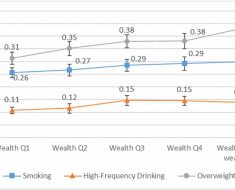
(HealthDay)—Peripheral nerve blockade with regular local anesthetic and liposomal bupivacaine is associated with lower oral morphine equivalent (OME) use at 72 hours after major lower extremity amputation (MLEA), according to a study being presented at the Annual Regional Anesthesiology and Acute Pain Medicine Meeting, held from April 11 to 13 in Las Vegas.
Catalina Dumitrascu, M.D., from the Mayo Clinic in Rochester, Minnesota, and colleagues conducted a retrospective cohort study involving adults undergoing MLEA. Three unique analgesic categories were defined: no regional anesthesia (426 anesthetics; 66.4 percent), peripheral nerve blockade with regular local anesthetic (90 anesthetics, 14 percent), and peripheral nerve blockade with regular local anesthetic and liposomal bupivacaine (125 anesthetics, 19.5 percent). Differences in analgesic outcomes were compared between the groups.
The researchers found that patients not receiving regional anesthesia had cumulative OME requirements at 72 hours that were 1.50 times greater than the OME requirements in the group receiving combined regular and liposomal bupivacaine in multivariable analyses (95 percent confidence interval, 1.12 to 2.01; P = 0.007). Opioid requirements in the nonregional group were 1.34 times greater than those receiving regional anesthesia with regular local anesthetic (95 percent confidence interval, 0.96 to 1.87; P = 0.085). No differences were seen in cumulative opioid requirements for patients receiving regional anesthesia with or without liposomal bupivacaine (P = 0.586).
Source: Read Full Article





